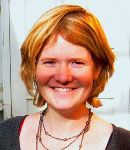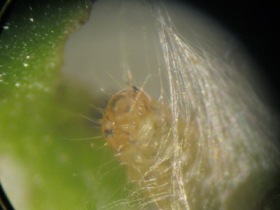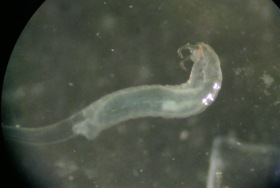
| |
| Home |
| Research |
| Publications |
| People |
| Teaching |
| Prospective Students |
| Links |
 |
Linda Bürgi Graduate Student (510) 643 59 03 lpbuergi@berkeley.edu |
||||||||
|
The subject of my dissertation is the Light Brown Apple Moth (LBAM), Epiphyas postvittana, a tortricid leafroller that was recently discovered in California. I study the biotic and abiotic factors affecting its establishment and potential spread, such as heat and cold tolerance of the moth and parasitism by Californian parasitoids. In the field we are monitoring phenology, age distribution, parasitism rates and composition of the parasitoid complex of LBAM larvae. In the lab I am assessing the effect of food source and crowding on larval development. This is potentially another factor explaining the high parasitism rates and parasitoid diversity of LBAM in the field. I am also conducting heat and cold tolerance studies in the lab to help us better estimate the potential spread and impact of LBAM. My special interest lies with the LBAM parasitoid Meteorus ictericus, which is the parasitoid causing the highest and most consistent parasitism rates of LBAM in the field. I study basic biological parameters such as development time, lifetime fecundity and age related egg load as well as behavioral parameters such as instar preference and superparasitism. I have also become intrigued with the peculiar larval features of this parasitoid and its relation to the parasitoid feeding behavior.
PUBLICATIONS Bürgi, L.P., Mills, N.J., 2012. Ecologically relevant measures of the physiological tolerance of light brown apple moth, Epiphyas postvittana, to high temperature extremes. Journal of Insect Physiology. Submitted. Bürgi, L.P., Roltsch W.J., Mills, N.J., 2011. Abundance, Age Structure, and Voltinism of Light Brown Apple Moth Populations in California. Environmental Entomology 40(6):1370-1377. Bürgi, L.P., Mills, N.J., 2010. Cold tolerance of the overwintering larval instars of light brown apple moth, Epiphyas postvittana. Journal of Insect Physiology 56: 1645-1650. |
|||||||||
Department of Environmental Science, Policy and Management
University of California, Berkeley
137 Mulford Hall
Berkeley, CA 94720-3114
nmills@berkeley.edu
Copyright © 2012 UC Regents - last modified 06/19/2012

